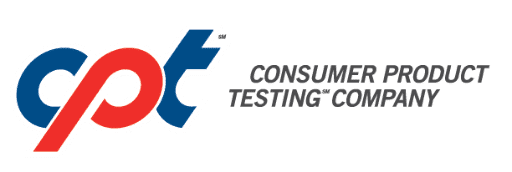Product Conceptualization
Once an Organization makes a business decision to develop and launch a new OTC Drug Product, the first step in the process is product conceptualization.
At this stage, the product concept is decided upon. This includes the selection of which active ingredient(s) will be utilized, their respective potencies, and comparison with the applicable OTC Drug Monograph to ensure that the product concept does not violate the Monograph.
Formula Development
Once the product concept has been established, the next step is to develop a formula, select raw materials to be included in the formula, and identify raw material vendors.
This stage typically involves the making of experimental product batches and a significant amount of lab testing for the purpose of ensuring that the product exhibits the desired attributes.
Upon successful completion of this stage, the product formula is finalized.
Selection of Container and Closure System
Having finalized the product formula, the next step is to select the container/closure system for the new OTC Drug Product. This must be decided upon prior to conducting stability studies since the expiration dating of a drug product is based upon the stability of the product and its compatibility with the container/closure system in which it will be distributed.
It is important to note that the United States Pharmacopeia (USP) now requires that plastic container systems be tested for the presence of undesirable elements and compounds which have been shown to leach into some drug products after they have been filled into their primary packaging.
Plastic container testing requirements may be found in USP General Chapter <661> Plastic Packaging Systems and their Materials of Construction which is broken into <661.1> Plastic Materials of Construction and <661.2> Plastic Packaging Systems for Pharmaceutical Use.
Development of Specifications
cGMP requires that formal specifications be established for raw materials, container components, and finished drug products.
Such specifications are used to assess the suitability of the drug product, the raw materials from which it is manufactured, and the components in which it is packaged. Stability specifications are also required.
Validation of Testing Methodologies
cGMP requires that analytical methods employed in the testing of drug products and their critical components must be validated.
This ensures the accuracy and suitability of testing methods with respect to the drug product in question.
Establishing Expiration Dating For Product Launch
Having finalized the product formula and selected the container and closure system, the next step is to establish the expiration date that will be used for the product launch.
This is achieved by making a “stability batch” and conducting stability testing at appropriate intervals. The batch must be at least 1/10th the size of a production-scale batch of the new product and it must employ processing equipment that is of similar design to that which will be used in production scale batches.
Stability testing must be conducted in each package configuration in which the product will be distributed. If Accelerated Stability Studies are employed to extrapolate (“estimate”) an expiration date for the launch, it is required that Real-Time Studies be conducted concurrently, so as to confirm the date arrived at through extrapolation.
NOTE: Expiration dating cannot be based solely upon the results obtained from Accelerated Stability testing. Expiration dating must be confirmed through the conducting of Real-Time Stability testing.
Creation of Product Labeling
Artwork for labeling must be created and carefully reviewed for accuracy and compliance with the applicable OTC Drug Monograph and also general rules for the labeling of drug products. Once approved, labeling materials must be printed in time for the product launch.
Process Validation
cGMP requires that the process used to manufacture drug products must be validated, so as to ensure that process equipment and operating parameters are appropriate, and that the resulting product will meet all specifications and acceptance criteria.
Typically, process validation is conducted over three (3) batches and includes verification of process parameter limits that appear in the Master Batch Record.
Drug Listing
Although OTC Drug Products do not require FDA approval prior to launch, the FDA must be notified of new OTC Drug Products prior to their launch. This notification takes the form of Drug Listing. Instructions for completing the Drug Listing process may be found in 21 CFR 207 Subpart D – Listing.
The basic requirement is for owners of OTC Drug Products to complete and submit a Drug Listing Form (found on FDA’s website) for each OTC Drug Product that it intends to launch. Samples of product labeling must also be provided at the time the Drug Listing Form is submitted.
Ongoing Stability Commitment
Once an OTC Drug product has been launched, the drug owner has an ongoing cGMP commitment to conduct stability testing on the first three (3) commercial batches, and also to initiate stability testing on at least one batch of the product that is manufactured within each calendar year, for each year that the product continues to be manufactured and distributed.
This ensures that the drug product and the manufacturing process remain in a state of control. Any change that is made to the product formula, container and closure system, the manufacturing process or any other critical parameter must be assessed for the possibility of having to reestablish expiration dating for the product after that change has been made.
Annual Product Review (APR)
cGMP requires that drug owners conduct an annual review of each of its OTC Drug Products, so as to verify the continuing appropriateness of the product formula, its specifications, testing methods and the manufacturing process.
Non-conformances such as testing failures, consumer complaints and Adverse Events reported from the field must also be tabulated and assessed. This APR must be fully documented and made available to FDA upon their request.

How can CPT℠ Labs help launch your OTC product?
When it comes to launching a new OTC Drug product in the U.S., CPT℠ Labs can provide expert testing and consulting assistance nearly every step of the way.
This includes early-stage consulting assistance in assuring that your new product complies with the correct OTC Drug Monograph; raw material and container/closure system testing; In-process, Product Release and Stability testing; Method Development and Method Validation services; Process Validation and Cleaning Validation testing; OTC Monograph efficacy testing (SPF, for example).
You can rely upon our expert capabilities to assist you in bringing your new OTC Drug product to market in the most efficient and compliant manner.


